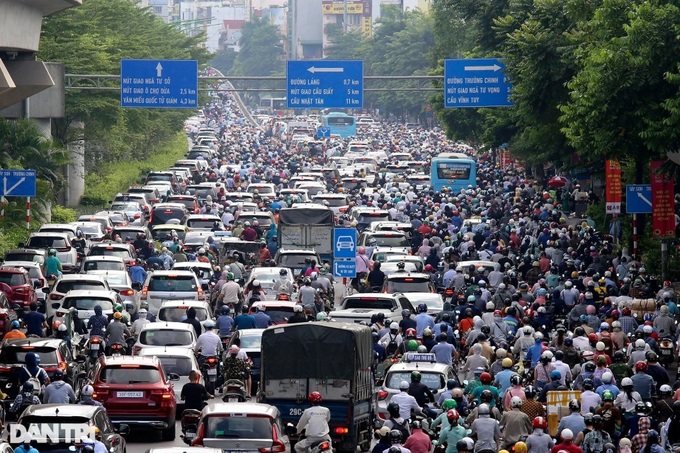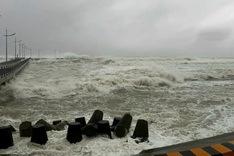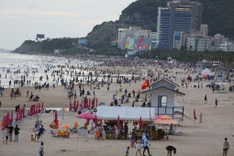
A traffic congestion in the Nga Tu So intersection in Hanoi during rush hours. Photo by Huu Nghi.
The draft outlines five key criteria for designating low-emission zones including demographics, air pollution levels, transportation facility accessibility, readiness for stricter standards and public acceptance.
Its ultimate goal is to gradually restrict motorbike use in the designated areas, paving the way for a complete motorbike ban in the inner city by 2030.
Speaking to local media, the director of Hanoi's Department of Natural Resources and Environment, Le Thanh Nam, said that vehicle emissions are among the main causes of air pollution in the capital city.
"Hanoi currently has 8 million vehicles including 1.2 million cars which consume approximately 80 million kWh of electricity and millions of litres of gasoline daily," he said. "The city is taking some solutions to reduce emissions from vehicles including utilising green energy, developing smart cities and traffic systems, and creating more green spaces in urban areas."
According to the official, the city will pilot low-emission zones in air pollution hotspots starting in 2025, where polluting vehicles will be restricted. More investment will be poured into public transport development including metro lines and bus rapid transit routes.
Reports from the Hanoi's Department of Transport showed that local personal vehicle numbers rise by 4-5 percent, and cars up by 10 percent annually. Meanwhile, the city's infrastructure grows by only 0.28 percent annually.
The city is facing rising air pollution in recent years. Fine particulate matter (PM2.5) levels in the city are nearly twice the national standard and transport is responsible for between 58 to 74 percent of PM2.5 emissions.




















